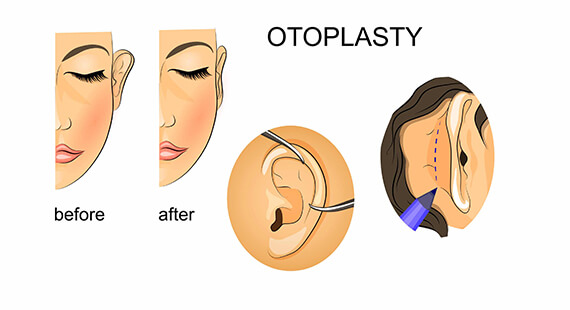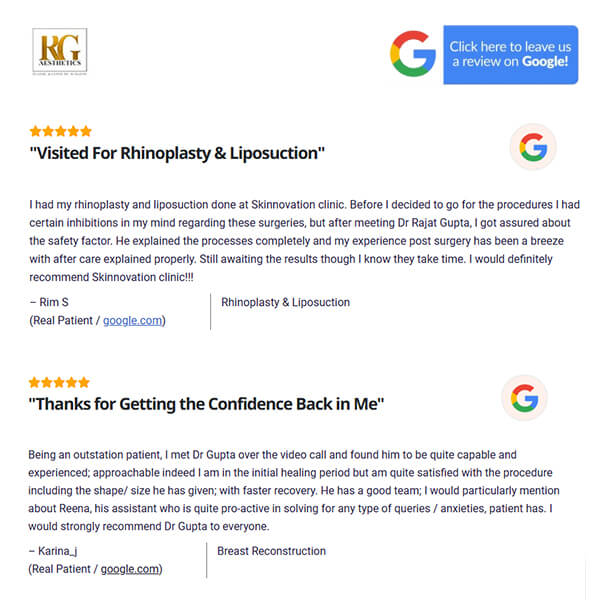Otoplasty – Ear Reshaping Surgery
What is Otoplasty?
Otoplasty, also known as Ear Reshaping Surgery, is a procedure to reshape the ears. It is often used to correct protruding ears but can also be used to change the shape or size of the ears. Otoplasty is a relatively safe procedure. It is commonly performed to address concerns such as prominent ears or asymmetry.
In simple terms, otoplasty is a procedure to “pin back” the ears. Otoplasty is typically done on children between the ages of 4 and 14, when the cartilage in the ears is still soft. However, it can also be done on adults. The procedure usually takes about one to two hours and is done under local anaesthesia.
Otoplasty can enhance the appearance and boost self-confidence by creating a more balanced and harmonious facial profile.
Why is Otoplasty Done?
Otoplasty is performed for the following reasons:
- To correct protruding or prominent ears that can cause self-consciousness.
- To reshape and reposition ears that have congenital deformities or injuries.
- To restore symmetry to asymmetrical ears.
- To enhance the overall facial aesthetics by improving the proportion of the ears.
What Otoplasty Can / Can’t Do
- Can
- Reshape and reposition protruding or prominent ears.
- Improve the symmetry between the ears.
- Enhance the overall facial balance and harmony.
- Boost self-confidence and improve self-image.
- Can’t
- Improve hearing or address any hearing-related issues.
- Completely alter the natural shape or size of the ears.
Don’t take biggest decision of life
Without getting complete information!
How Should You Prepare For Otoplasty?

Schedule a consultation with a qualified plastic surgeon specialising in otoplasty.
- Discuss your concerns, goals, and expectations during the consultation.
- Undergo a thorough examination of the ears and facial features.
- Follow any pre-operative instructions provided by the surgeon, such as fasting requirements.
- Provide a detailed medical history, including any medications, allergies, or previous surgeries.
- Arrange for transportation to and from the surgical facility on the day of the procedure.
What is the Procedure of Otoplasty?
Otoplasty, also known as ear reshaping surgery, is a versatile procedure that can be performed under either local or general anaesthesia, depending on the patient’s age, preference, and the complexity of the surgery. Dr Rajat Gupta will determine the most appropriate anaesthesia option for each case.
During the otoplasty procedure, the surgeon will employ specific surgical techniques tailored to the individual’s needs and desired outcomes. Generally, the surgery involves making small incisions discreetly placed behind the ear, where they are well-concealed within the natural skin creases.
Through these carefully placed incisions, the surgeon gains access to the underlying cartilage framework of the ear. The cartilage may be reshaped, repositioned, or augmented depending on the specific concerns and goals of the patient.
To achieve the desired shape and position, the cartilage may be sculpted, folded, or stitched using sutures. This allows the surgeon to create a more proportionate and aesthetically pleasing ear structure. In some cases, cartilage grafts from other areas of the body may be used to augment or reshape the ear.
Once the necessary modifications are made to the cartilage, the incisions are meticulously closed using sutures. A protective dressing or bandages may be applied to support the newly shaped ears and promote proper healing.
Recovery After Otoplasty?
- Otoplasty is usually performed on an outpatient basis, allowing you to return home the same day.
- Mild to moderate swelling, bruising, and discomfort are common immediately after surgery but will gradually diminish.
- Pain medication and antibiotics may be prescribed to manage pain and prevent infection.
- Follow the surgeon’s instructions regarding dressing changes, hygiene, and ear protection.
- Avoid activities that may put pressure or strain on the ears, such as contact sports, for 2-3 weeks.
- Attend follow-up appointments as scheduled to monitor healing progress and address any concerns.
Risks involved in Otoplasty?
As with any surgical procedure, there are potential risks and complications associated with otoplasty. These may include infection, bleeding, scarring, asymmetry, changes in sensation, or dissatisfaction with the aesthetic outcome. However, selecting a skilled and experienced plastic surgeon greatly minimises these risks and increases the likelihood of achieving desired results.
Remember, otoplasty is a personal decision, and consulting with a qualified plastic surgeon is crucial for understanding the suitability of the procedure for your specific needs.


